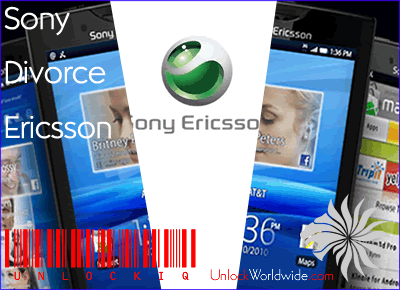

Japan’s Sony Corporation‘s worldwide brand together with Sweden’s Ericsson telecom expertise were not enough, and after 10 years the Sony Ericsson joint venture into wireless mobile phones did not unlock the results needed to compete in todays competitive smartphone market.
Sayonara Ericsson / Farväl Sony
Notwithstanding Sony’s associated interests in movies, records, publishing as well as consumer electronics, and Ericsson’s network expertise and knowledge of phone standards, the unusual marriage did not prove capable of unlocking the results predicted by many industry analysts. Perhaps the extreme cultural difference between Japanese Sony and Swedish Ericsson was the ingredient for failure to unlock any Sony Ericsson chemistry.
The marriage began as an alliance of the ailing; both Sony and Ericsson had declined in the competitive and innovative mobile phone market. The honeymoon was short and neither Sony’s fabled innovative genius (Walkman, Play Station) nor Ericsson’s historic talent for producing quality telephones produced a groundbreaking, trend setting phone.
Benefits of the Marriage
The concept was not without merit; the newborn was specifically created to be free from both parents excessive bureaucracy. It offered an entrepreneurial environment, opportunities to execute with speed and get a product to market ahead of the competition.
Sadly Sony, who contributed impeccable Brand image, frequently permitted other Sony divisions to fight or even sabotage each other’s initiatives. Ericsson plunged into research and development placing considerable emphasis on the design or WOW factor of the product. Regrettably they were less effective in marketing quality and timely delivery to market.
The Honeymoon
The venture did however begin with success; the Ericsson T-68 mobile saw highly satisfying sales through 2002. It offered an innovative coloured screen that few competitors bothered to replicate for over a year. Upgraded and released in 2002 as the Sony Ericsson T-68i it featured the Ericsson developed blue-tooth technology and was tri-banded, supporting 1900 MHz that opened sales to the US market.
It also broke with Ericsson’s previous public persona, producing a slim, compact phone with a concealed antenna; critical as Nokia also brought to market a concealed antenna. However Nokia neglected to unlock a trend setting image and Sony Ericsson reaped rewards for quality design and state of the art features.
Starting A Family
As the marriage matured it produced what many consider the phone of the decade; the Sony Ericsson P-800 smartphone which impressed and influenced Apple’s Steve Jobs. A year later it transformed into the Sony Ericsson P-900, which was regarded as the high point of the Sony Ericsson alliance.
Divorce – Unlocking Marriage
Sony Ericsson’s initial success with the smartphone was overshadowed by the Apple hype and success of the iPhone juggernaut. Nor did Google’s decision to enter the market help long term prospects. For a multitude of reasons Sony Ericsson lost focus, market share and the investment needed to keep a product on the public’s WANT list. It became inconsequential and sales reflected the lack of interest.
The market today has divided into two key segments; cool products that satisfy the largely youth oriented market in developed countries and low cost products that are tools to progress in the huge markets of India, China and other developing countries. Sony Ericsson as partners no longer excelled in either.
So, will the singles scene unlock new passions in either Sony or Ericsson? Will Ericsson be back in the mobile saddle again? Unlockworldwide.com are guessing on Sayonara, Farväl (farewell) Ericsson. Having bought out Ericsson, Sony now has the green light to develop and market smartphones and tablets on a seamless platform together with the rest of its consumer products like televisions and computers. Something they could not ignore with Apple becoming such a dominant force in consumer electronics.
